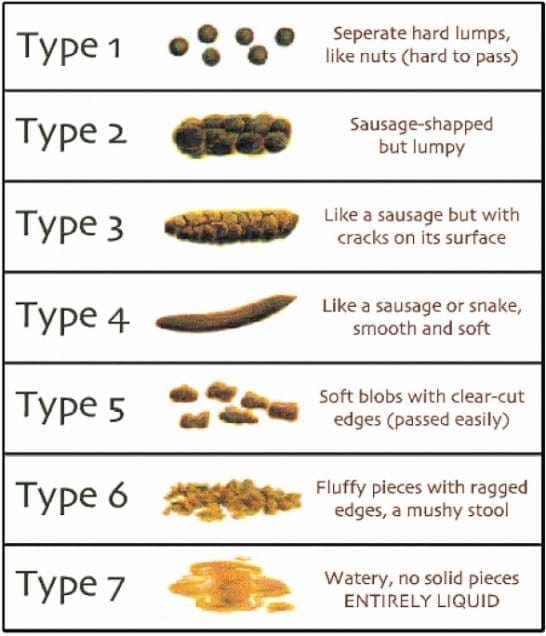soMEday DECISIONS

Understanding your bowel movements—using tools like the Bristol Stool Chart—can reveal important insights into your digestive health.
What Your Stool Says About Your Health

The Bristol Stool Chart is used by practitioners everywhere.
The Bristol Stool Chart is used by health practitioners around the world to help assess digestive health. Paying attention to your bowel movements (or lack of them) can provide valuable clues about what’s going on inside your body.
Type 1: Separate hard lumps, like nuts, are hard to pass. This may indicate constipation.
Type 2: Sausage-shaped but lumpy. Also a sign of constipation, and possibly dehydration.
Type 3: Sausage-shaped, but with cracks on its surface. If it passes in under a minute, this is considered a healthy stool.
Type 4: Sausage – or Snake-like and smooth and soft. This is the ideal stool type for most people.
Type 5: Soft blobs with clear-cut edges; easy to pass. May come with urgency to use the bathroom, suggesting mild diarrhea or a need for more fiber.
Type 6: Fluffy pieces with ragged edges and mushy. Fluffy pieces with ragged edges, mushy in texture. If you have more than three of these stools per day, it’s diarrhea. This can cause loss of important minerals and may indicate bowel inflammation.
Type 7: Water, no solid pieces and entirely liquid. Moves through the digestive tract quickly and is often a sign of illness caused by a virus, bacteria, or parasite.
Stool Color and What It Means
Color isn’t part of the official Bristol chart, but it’s another important clue to digestive health. Stool color is influenced by diet and bile content (bile is a yellow-green fluid that helps digest fats).
Brown: Almost any shade of brown—or even green—is normal.
Green: Often due to eating a lot of vegetables (good) or excessive green food coloring (not good). With Types 5, 6, or 7, it may mean food is moving too quickly for bile to break down.
Red: Can be from food coloring or medication, but bright red may indicate bleeding in the large intestine or rectum. If it persists, contact your doctor.
Black: May be from synthetic iron supplements, certain medications, or dark-colored foods. However, dark maroon or tarry stools with a foul odor could signal internal bleeding—see a doctor immediately.
Light Colors: Yellow is normal for breastfed infants. In adults, it can suggest excess fat or nutrient absorption issues. Chalky white stools may be a medication side effect or another condition—seek medical advice if it continues.
Disclaimer: The information on this page is for educational purposes only and is not a substitute for professional medical advice. Read our full disclaimer here.
How To Reach Us
Call/Text: (480) 525-2155
Location: 1237 S. Val Vista Dr., Mesa, AZ 85204
Office Hours: By Appointment Only
Quick Links
Newsletter
Subscribe now to get updates on latest happenings.
Created with ©systeme.io


